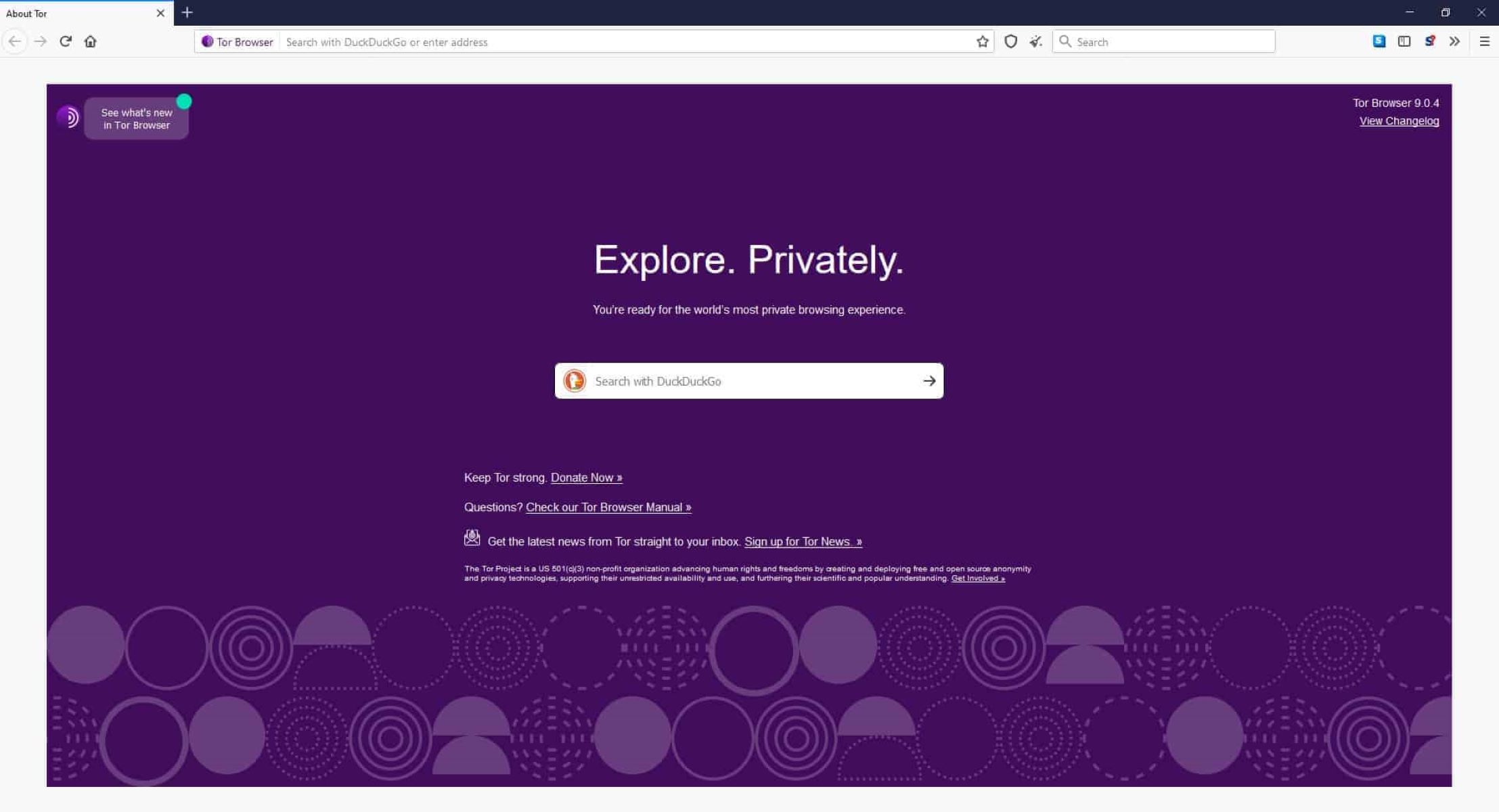Introduction
The Tor browser is renowned for its ability to provide users with a secure and private browsing experience. However, some users may encounter sluggish performance while using the Tor browser, leading to frustration and a less-than-ideal browsing experience. Understanding the potential reasons behind the slow performance of the Tor browser and exploring effective solutions is crucial for enhancing its speed and optimizing the browsing experience.
In this article, we will delve into the common factors that can contribute to the sluggishness of the Tor browser. By identifying these potential issues, users can gain insights into how to address them and improve the overall performance of their browsing sessions. Whether you are a seasoned Tor user or someone who is new to this privacy-focused browser, understanding the reasons for its slow performance and discovering effective solutions can significantly enhance your browsing experience.
Let's embark on a journey to uncover the potential causes of a slow Tor browser and explore actionable strategies to boost its speed and efficiency. By the end of this article, you will be equipped with valuable insights and practical tips to optimize your Tor browsing experience, ensuring that you can enjoy the benefits of enhanced privacy and security without compromising on speed and responsiveness.
Possible Reasons for Slow Tor Browser
-
Network Congestion: The Tor network relies on a series of volunteer-operated servers to redirect and encrypt internet traffic, which can lead to network congestion. As a result, the increased traffic flow within the Tor network can contribute to slower browsing speeds, especially during peak usage times.
-
Encryption Overhead: The robust encryption utilized by the Tor browser to ensure user privacy and security can introduce a significant overhead, impacting the speed of data transmission. The encryption and decryption processes involved in routing traffic through multiple relays can lead to slower browsing speeds compared to traditional browsers.
-
Limited Bandwidth: The bandwidth available to Tor users is shared among the network's relays, which are operated by volunteers. This shared bandwidth can result in slower browsing speeds, particularly when numerous users are simultaneously accessing the network, leading to potential congestion and reduced performance.
-
Relay Distance: The geographical distance between a user and the Tor network's relays can influence browsing speed. When a user's connection must traverse long distances to reach the network's relays, latency can increase, resulting in slower response times for web page requests.
-
Resource-Intensive Websites: Websites that are laden with resource-intensive elements such as high-resolution images, videos, or complex scripts can contribute to slower browsing speeds on the Tor network. The additional time required to load and render these elements can exacerbate the overall sluggishness of the browsing experience.
-
Outdated Browser Version: Using an outdated version of the Tor browser can lead to performance issues. Newer browser versions often include optimizations and bug fixes that can enhance browsing speed and overall responsiveness.
-
Inadequate Hardware Resources: The performance of the Tor browser can be impacted by the hardware capabilities of the device on which it is running. Devices with limited processing power or insufficient memory may struggle to handle the encryption and routing processes, resulting in slower browsing speeds.
-
Overloaded Exit Nodes: The exit nodes through which traffic exits the Tor network can experience heavy traffic loads, leading to potential bottlenecks and slower data transmission. Overloaded exit nodes can significantly impact the overall browsing speed for Tor users.
Understanding these potential reasons for the slow performance of the Tor browser is crucial for identifying strategies to address and mitigate these issues. By recognizing the factors that can contribute to sluggish browsing speeds, users can take proactive steps to optimize their Tor browsing experience and enhance overall performance.
Solutions to Speed Up Tor Browser
Enhancing the speed and responsiveness of the Tor browser is a priority for users seeking to maximize their browsing experience while maintaining privacy and security. Fortunately, several effective solutions can be implemented to address the potential causes of slow performance and optimize the speed of the Tor browser.
-
Opt for Off-Peak Usage: To mitigate the impact of network congestion, consider using the Tor browser during off-peak hours when network traffic is typically lower. This can result in improved browsing speeds as the network experiences reduced congestion, allowing for smoother data transmission and faster response times.
-
Update to the Latest Version: Ensuring that you are using the most recent version of the Tor browser is essential for accessing performance optimizations and bug fixes. Upgrading to the latest release can address known issues that may impact browsing speed, providing a more efficient and responsive browsing experience.
-
Limit Resource-Intensive Content: Avoiding websites with excessive resource-intensive elements can contribute to faster browsing speeds on the Tor network. By prioritizing lightweight and minimalistic websites, users can reduce the time required to load and render web pages, resulting in improved overall performance.
-
Optimize Hardware Resources: Upgrading the hardware of the device running the Tor browser can significantly enhance browsing speed. Devices with improved processing power and ample memory can more effectively handle the encryption and routing processes, leading to a smoother and more responsive browsing experience.
-
Utilize Multiple Entry Nodes: Configuring the Tor browser to utilize multiple entry nodes can distribute traffic more efficiently, potentially reducing latency and improving browsing speeds. This approach can help mitigate the impact of geographical distance between users and the network's relays, resulting in faster data transmission.
-
Explore Alternative Exit Nodes: When encountering slow browsing speeds, users can experiment with different exit nodes to identify those that offer improved performance. By selecting exit nodes with lower traffic loads, users can potentially alleviate congestion-related slowdowns and experience faster data transmission.
-
Enable Compression: Enabling data compression within the Tor browser can reduce the volume of data transmitted, leading to faster page loading times and improved overall browsing speed. This feature can be particularly beneficial when accessing websites with substantial content, enhancing the efficiency of data transmission.
-
Monitor Bandwidth Usage: Keeping track of bandwidth usage within the Tor browser can provide insights into potential congestion and performance bottlenecks. By identifying periods of high bandwidth utilization, users can adjust their browsing habits to optimize speed and responsiveness.
By implementing these solutions, users can effectively address the factors contributing to slow browsing speeds on the Tor network and optimize the performance of the Tor browser. These strategies empower users to enjoy the benefits of enhanced privacy and security while ensuring a faster and more responsive browsing experience.
Conclusion
In conclusion, the Tor browser offers unparalleled privacy and security features, allowing users to browse the internet with confidence and anonymity. However, the potential for slow browsing speeds can detract from the overall experience. By understanding the common reasons behind the sluggish performance of the Tor browser and exploring effective solutions, users can take proactive steps to optimize their browsing experience.
Addressing network congestion, encryption overhead, limited bandwidth, and geographical distance between users and relays are essential for improving browsing speeds on the Tor network. Additionally, staying updated with the latest browser version, optimizing hardware resources, and strategically managing resource-intensive content can significantly enhance the responsiveness of the Tor browser.
By implementing off-peak usage, leveraging multiple entry nodes, and exploring alternative exit nodes, users can mitigate the impact of network congestion and geographical distance, resulting in faster data transmission. Enabling data compression, monitoring bandwidth usage, and prioritizing lightweight websites further contribute to a smoother and more efficient browsing experience.
Ultimately, the combination of these strategies empowers users to enjoy the benefits of the Tor browser's privacy and security features without compromising on speed and responsiveness. By taking proactive measures to address the potential causes of slow browsing speeds, users can optimize their Tor browsing experience and reap the full advantages of a secure and private internet experience.
Incorporating these solutions into your Tor browsing habits can lead to a noticeable improvement in browsing speeds, ensuring that you can navigate the internet with confidence and efficiency. As the Tor network continues to evolve and improve, users can look forward to an even more seamless and responsive browsing experience, further enhancing the appeal of this privacy-focused browser.
By staying informed about the factors influencing browsing speeds on the Tor network and implementing the recommended solutions, users can navigate the internet with enhanced speed, security, and privacy, unlocking the full potential of the Tor browser.

























